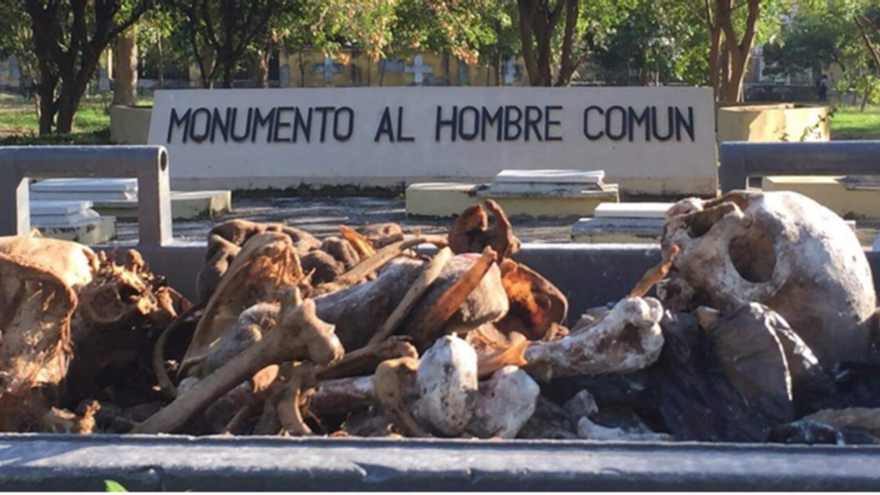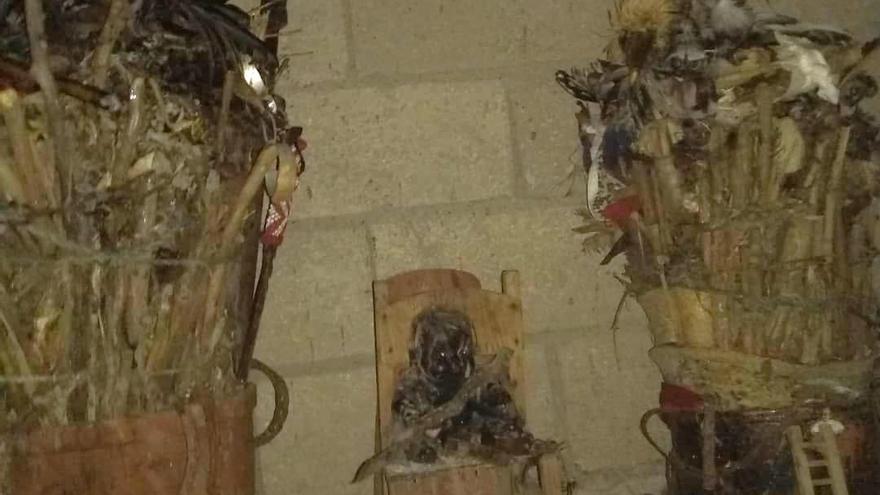
![]() 14ymedio, Nelson García/Juan Izquierdo, Havana, 5 November 2023 — The Cuban police only respect one religion: Palo Monte. The hermetic world of its rituals, its sorcerers and cauldrons, its fragmentary language – the kikongo – with which they pronounce incantions and curses, have made it since colonial times the most feared of the Island, according to its own followers. There is only one aspect of the Palo Mayombe, as it is also known, that agents do not let pass: the desecration of tombs to obtain ritual bones.
14ymedio, Nelson García/Juan Izquierdo, Havana, 5 November 2023 — The Cuban police only respect one religion: Palo Monte. The hermetic world of its rituals, its sorcerers and cauldrons, its fragmentary language – the kikongo – with which they pronounce incantions and curses, have made it since colonial times the most feared of the Island, according to its own followers. There is only one aspect of the Palo Mayombe, as it is also known, that agents do not let pass: the desecration of tombs to obtain ritual bones.
“The human bone is the center of the foundation,” Ta José, a 42-year-old habanero who has been practicing this cult from Central Africa for several decades, explains to 14ymedio. The foundation – also called garment or nganga, cauldron – is the most sacred object of the paleros. It consists of a container where pieces of wood, earth and endless objects are deposited that the palero [practitioner] should not reveal. It also contains human remains.
The importance of the foundation doubles if the bone belonged to someone prominent or a former member of the religion. Hence, to achieve it, a palero does not skimp on resources or think twice before entering a cemetery. As complicated as it is, “a way has always been sought to achieve it,” admits Ta José.
The most common way is to go to the cemetery and steal it. The other way is to find another palero that already has one
“The most common way is to go to the cemetery and steal it. The other way is to find another palero that already has one, because he went into the cemetery himself or bought it from the custodian,” he says. The business of buying and selling bones has caused the systematic dismissal of the cemetery’s custodians on the Island. The most well-known case of this year, last January, was that of the continuous desecration of the Matanzas cemetery, which provoked the intervention of the provincial Communist Party.
“Among us or with the help of friends we look for the key points,” describes the palero. “When someone needs, for example, a head (skull), he asks his contacts, even if they are from a different branch of palo monte, or he goes to the cemetery to ask the custodian. It’s always resolved. Of course, it’s quite expensive.”
“It depends on the type of work that is going to be done and what part of the body is going to be worked on,” he explains. “The smallest and cheapest piece you can get costs 1,000 pesos or its equivalent in dollars. A complete skeleton can cost between 10,000 and 12,000 pesos. The price may vary depending on the circumstances of the death, the illness that the deceased suffered. It also depends on the race: Chinese bones have more power for us and are sold at higher prices.”

According to Ta José, there are people who are dedicated to going to the tombs and removing as many bones as they can. Then they find how to sell them on the black market, although no store of religious items – legal, such as self-employment – will announce it unless the person who asks can be trusted. “The police have always persecuted the desecrators,” he insists, but in general they “don’t mess” with the paleros.
Sometimes, of course, when they see someone wandering the streets “with a sack” late at night — as usually happens after a ceremony — the officers arrest the person and find that he is carrying a knife. The knives, he explains, are part of the foundation. When the person explains it to the police, they usually let him continue on his way.
There are families who provide the bones of their deceased, because they were practitioners and that motivates them to make the donation
“Bones are essential in palo monte,” emphasizes Ta José. For a palero, in the bones are “the foundations of power” and its material expression. If there is a spiritual foundation, which is “attended” with rum and tobacco smoke, the material cannot exist without the remains of some person. “There are families who provide the bones of their deceased, because they were practitioners and that motivates them to make the donation,” but it is not usual, he says.
All the “works” of the palero depend on the foundation, which Ta José synthesizes with an enumeration: “Consecrate, save, kill, solve problems and help the world.” According to the habanero, each cauldron is effective and achieves what its owner wants, sooner or later. “Some are stronger than others. It depends on the ceremony and the person’s knowledge,” he says, although he prefers not to say more: an important part of his religion is to keep secrets, which practitioners handle only after several initiations and tests. “I can’t say everything,” he admits.
Despite the difficulties and the mystery that has always surrounded palo monte, its impact on Cuban society has not stopped since religion arrived from Africa, he says. “There was always a certain discord between palo monte and santería, because each one wanted to be the strongest cult.” On the Island, studies say that santería is more widespread. However, Ta José insists, palo mayombe retains the reputation of being “the most effective, fastest and strongest.”
Translated by Regina Anavy
____________
COLLABORATE WITH OUR WORK: The 14ymedio team is committed to practicing serious journalism that reflects Cuba’s reality in all its depth. Thank you for joining us on this long journey. We invite you to continue supporting us by becoming a member of 14ymedio now. Together we can continue transforming journalism in Cuba.
